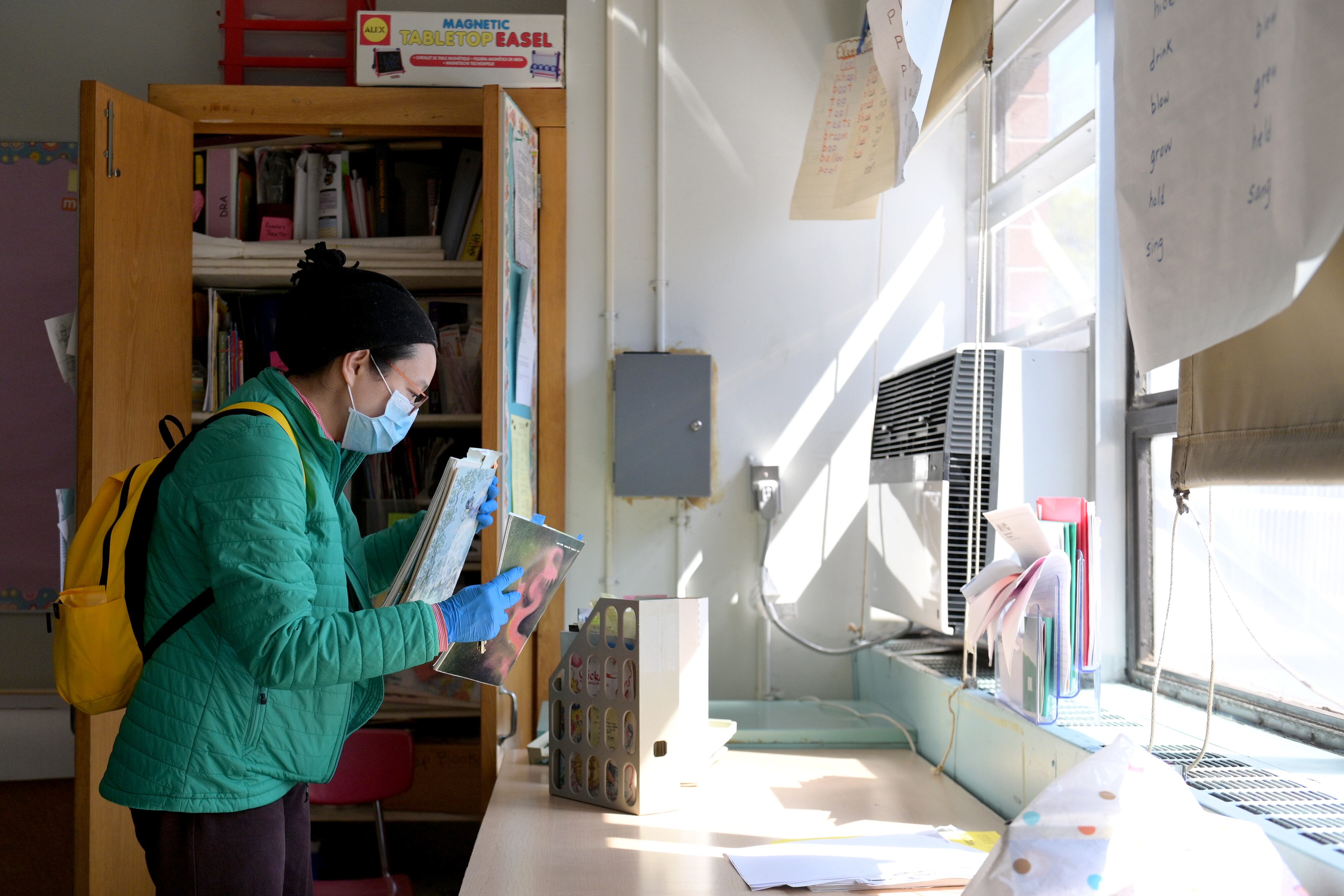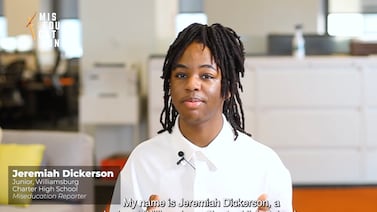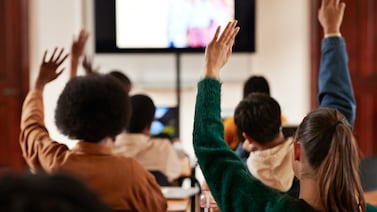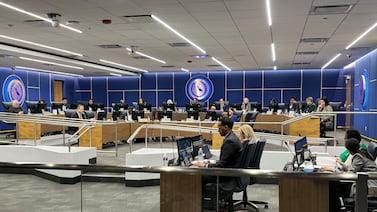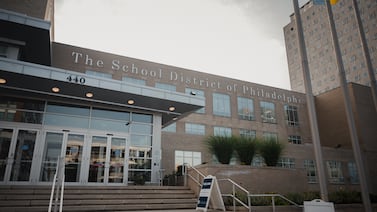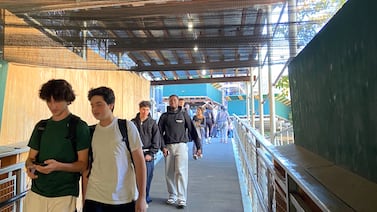Earlier this month, as Idaho’s stay-at-home order expired, the West Side School District hatched a plan to reopen for the school year’s final few weeks.
With no confirmed cases of the coronavirus in the county, the rural district in the southeastern corner of the state thought school could return to something like business as usual. But the state board of education said districts needed local public health officials to sign off — and the health officials rejected the West Side school board’s plan.
It was a frustrating outcome for Superintendent Spencer Barzee. “We want their guidance, but we don’t want their mandate that you’re not going to school,” he said of state officials and health officials in the fall. “I have an elected school board that can make that decision.”
The Idaho district’s experience is just one of several kinds of power struggles that school districts saw this spring as schools across the country shut their doors to help stop the spread of the coronavirus. Those tensions played out in much bigger cities that were hot spots for the virus, too, such as New York City. There, the mayor made the call to close school buildings for the rest of the school year, only to be told by the governor that the decision was not his to make.
It’s unlikely we’ll get through the fall without similar tensions, given the structure of America’s education system. While states generally have legal authority over school districts, there is a “powerful tradition of local control over education,” says Jeffrey Henig, a Columbia professor of education and political science.
And with so many fraught issues tied up in reopening schools — the safety of students and staff, the costs facing cash-strapped districts, and the potential hit to the economy if parents can’t send students to school — divisions are to be expected, even in places where political conflict usually doesn’t reach the schoolhouse door.
“I think on this issue we’re likely to see a lot of unusual turmoil,” Henig said. “There’s no getting around the fact that it’s going to be a mess.”
Across the country, governors, mayors, state education chiefs, local superintendents, school boards, and public health officials are weighing what a safe reopening of school buildings could look like in the fall. For local school leaders, it’s an even more complicated set of questions than they faced in March, since they are making plans both for opening schools and for potentially having to close them again if their area faces a new wave of cases. And those are just two of the many contingencies they’re planning for right now.
The Centers for Disease Control and Prevention has said that decisions should be made with “local health officials and other State and local authorities” who can assess the spread of the coronavirus. Several states have already established task forces for reopening schools, often to provide guidance to local districts.
But exactly how involved governors should get is a point of contention. Tennessee Sen. Lamar Alexander, a Republican who heads the Senate’s education committee and served two terms as the state’s governor, said recently he thought governors “should generally defer to the local school district” on reopening plans.
“If there is a statewide health risk by the actions of a local community, then perhaps the governor should step in,” he said. “But generally speaking, I think it ought to be up to the local school board, the classroom teachers, and the community to decide how to make their schools safe.”
Whether new statewide orders will be handed down, and how much time local districts have to respond, is a cause of concern for some superintendents, said Michael Casserly, who heads the Council of the Great City Schools, which represents the nation’s largest urban districts.
“Some local school districts were given only a matter of days before they had to close up shop, and in many cases it was done without any particular conversation at the local level,” Casserly said. “School districts are worried about this happening in reverse.”
Several school leaders said they didn’t foresee any issues working with state and health officials to make decisions. But the potential for conflict may be greater in communities where there are political, racial, or other divides between local and state governments, or in cities where mayors run the school systems and aren’t used to deferring to governors on education questions.
In New York City, this tension is still evident. While the governor eventually agreed with the mayor that schools should remain closed in the spring, last week he said a decision about when and how to reopen New York City schools wouldn’t be made until July, at least, and that it would be his call, not the mayor’s. Then this week, the head of the state’s education board said the work of deciding how to reopen schools across New York should be left largely to the state’s education agency.
“There is so much uncertainty it’s hard to even describe the uncertainty,” said Kim Watkins, who heads an education council in Manhattan and has a daughter heading into middle school. “I know that there are a lot of people thinking of all of these issues, but we just don’t have a plan yet. Hopefully the mayor and the governor will figure out a path forward.”
Some places have already said they are leaving decisions in local hands. In California, the head of the state’s education agency said that local school districts “will make their own decisions about when they will open.” And draft guidelines from the state indicate districts will have a lot of flexibility to decide what in-person learning will look like, EdSource reported.
In Miami-Dade County, meanwhile, a spokesperson for the public schools said the schools superintendent would make the final call. “The authority to open and close schools lies with the Superintendent,” said Daisy Gonzalez-Diego. But, she noted, he will work with the governor’s office, and state health and education officials.
In Atlanta Public Schools, too, officials expect they’ll have a lot of say over their reopening plans, though they do plan to check in with health officials and surrounding school districts.
That’s partly because they operate under a unique state initiative that gives them a lot of flexibility to opt out of state requirements in exchange for signing a performance contract. And Georgia is usually the kind of state that issues recommendations, not mandates, says Jason Esteves, Atlanta’s school board chair.
“If something does come down from the state that we don’t agree with … I don’t anticipate us having to follow anything,” Esteves said. “What we need to do is make sure we’re making the best decisions for Atlanta.”
For Pedro Martinez, the superintendent of San Antonio Independent School District, the spring closure decisions were a source of frustration. “We definitely didn’t have any control,” he said.
Now, officials are gearing up to start summer school, and hoping that the in-person sessions will help schools show families what it will look like to practice social distancing in classrooms. But Martinez knows that whatever plans the district makes now are “all contingent on new information coming, and that new information comes in daily or weekly, and also what our local and state governments may require.”
One thing he’s keeping an eye on is whether state education officials suggest specific limits on how many students can be in a classroom for the fall as they did for summer school.
“We tell parents: ‘Be ready, this is a time we have to be flexible,’” Martinez said.
Marta W. Aldrich contributed reporting.
This story was updated with additional information about how school reopening decisions will be made in Miami-Dade County.

